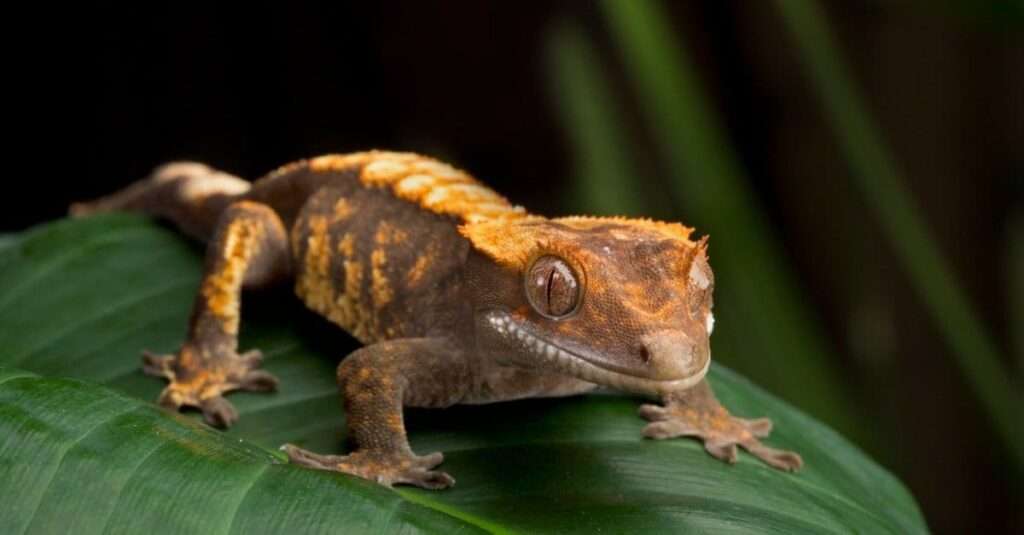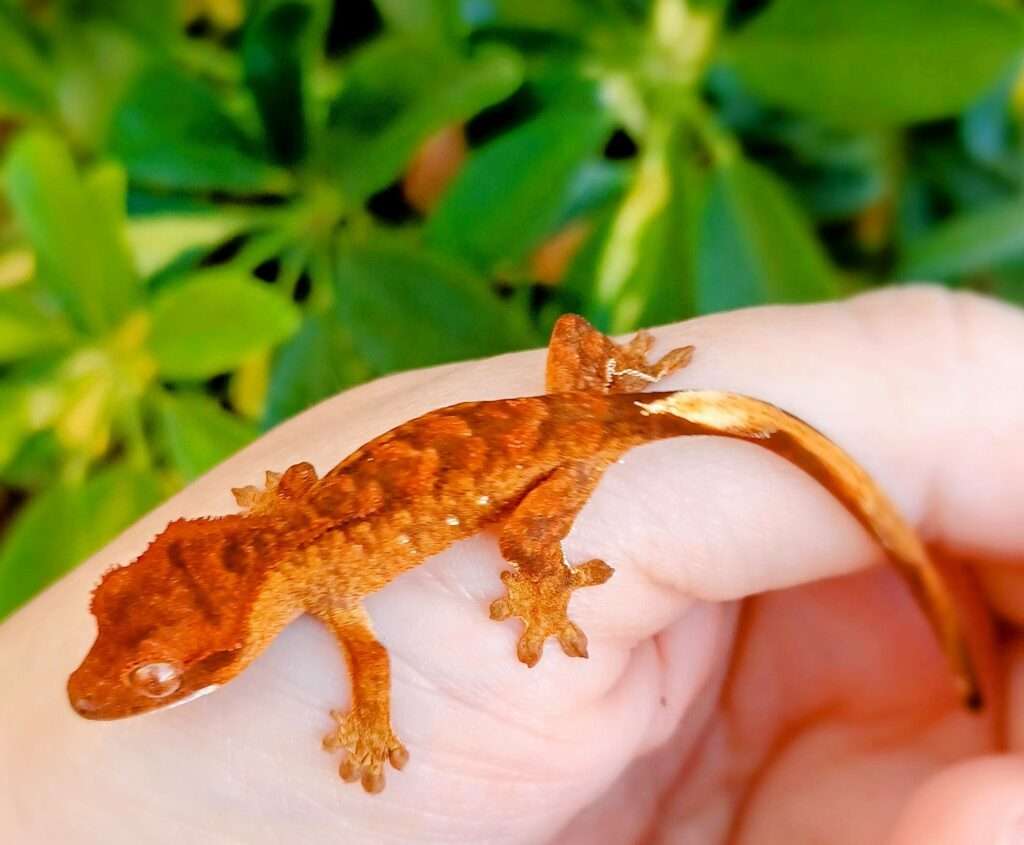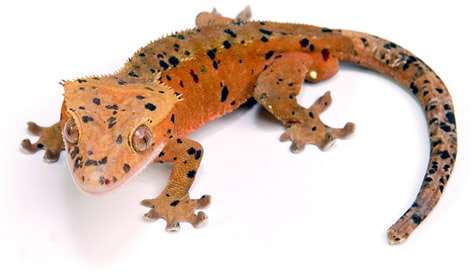
Description:
Scientific name: Phelsuma laticauda
Life span: Up to 15 years
A species of day gecko that is diurnal is the gold dust day gecko (Phelsuma laticauda). Bright green, yellowish green, or very infrequently blue make up the body color. The red spots on the neck and upper back are typical for this day gecko. The upper portion of the skin around the eye is blue, and there are three transverse stripes that are rust-colored on the head and snout. Three tapering red bands can be seen on the lower back. The tail has a very minor flattening. The reverse is off-white in color. Juveniles lack the red coloring and have an off-white tail and limbs.
Native Region/Habitat
It has been introduced to Hawaii and other Pacific islands, as well as northern Madagascar, Tanzania (Dar Es Salaam), and the island of Comoros. Usually, houses and different trees have it.
Behavior:
This species’ males exhibit a fair amount of aggression. Males from outside their domain are not tolerated. Males may even badly hurt females in captivity when they cannot flee.
Care As a pet/In captivity:

Enclosure size: As a little reptile, a gold dust day gecko does not require a large enclosure that takes up a lot of room in the home. It is possible to keep young gold dust day geckos in a square tank that is only 12 inches high by 12 inches wide. In a tank that is 18 inches high, 18 inches wide, and 24 inches high, a male and female adult pair will survive.
Because this species prefers climbing and requires a gradient of temperatures with the warmest at the top, it is advisable to utilize an enclosure that is vertically inclined. The forest environment here is the most similar to their natural home.
Lighting: To keep healthy and happy, these little bright reptiles require a lot of strong light in their tank. The terrarium must have a UVB light for gold dust day geckos. A UVB lamp would be the best choice for a small enclosure. A UVB tube may be added to the terrarium if the gold dust day gecko tank is larger.
A gold dust day gecko requires 12 hours of UVB radiation per day. The reptile begins to lose its vibrant hues and turns dull if it does not receive enough light.
Temperature and Humidity: Given that the gold dust day gecko is native to warmer areas, the conditions of its enclosure ought to match that. Because the gold dust day gecko has cold blood and is unable to control its body temperature on its own, the tank should have a suitable temperature gradient with both colder and warmer sections. The tank’s colder area needs to be between 72°F and 77°F, while the basking region needs to be placed at about 90°.
By spraying the tank twice a day, it is possible to maintain the humidity level in the tank at 80%. Or, add a humidifier to the tank to maintain a constant humidity level all day. With the proper kind of substrate in the tank, humidity is also better maintained.
Food and Water: Because the majority of the meals that gold dust day geckos consume are easily accessible in pet stores and online, they are extremely simple to feed at home. Gold dust day geckos eat insects, flowers, and nectar in their natural habitat, so their diet in the cage should consist of both plant-based and protein items.
To maintain a balanced diet, feed the gold dust day gecko a range of insects, such as crickets, mealworms, roaches, and fruit flies. The gecko should be able to consume the insects because of their size. The greatest guideline is to make sure that the bug does not exceed the gecko’s head width. To boost the lizard’s diet, dust the insects with additional vitamin and calcium powder for geckos.
A dish of fresh drinking water must be provided in the terrarium for gold dust day geckos. To keep the tank’s degree of hygiene adequate, make sure to replace the water every few days.
Table





